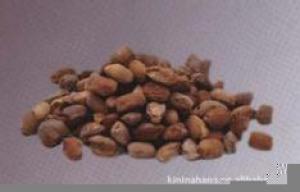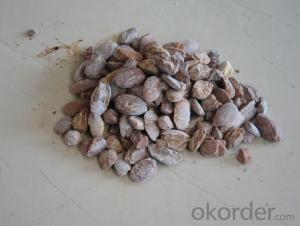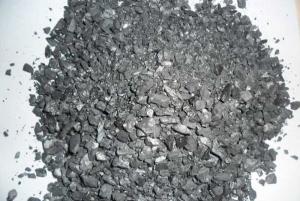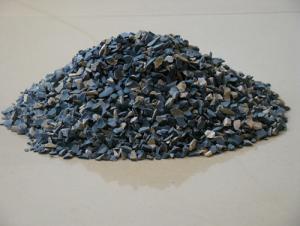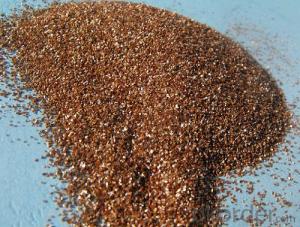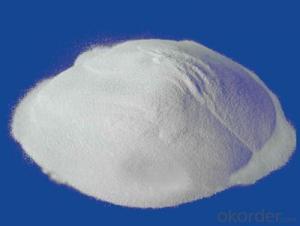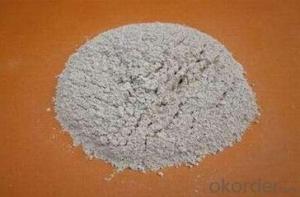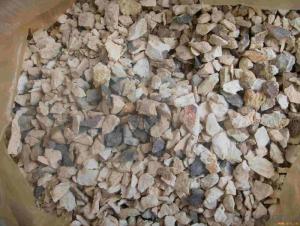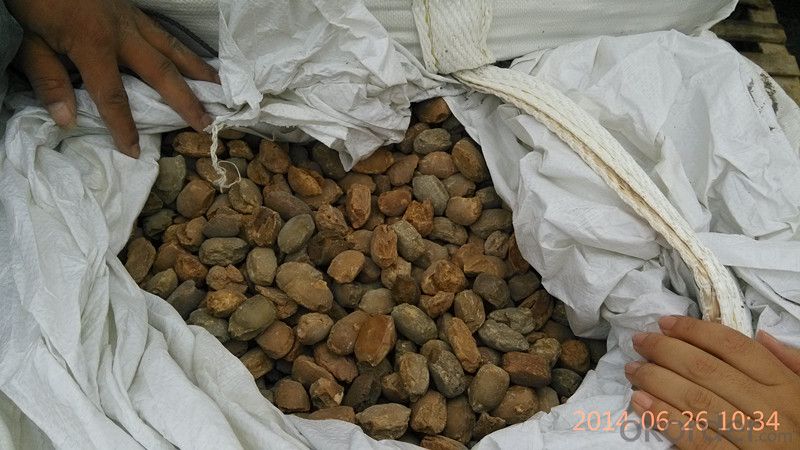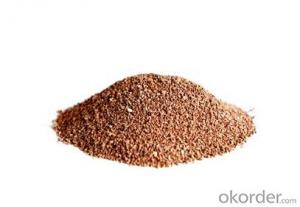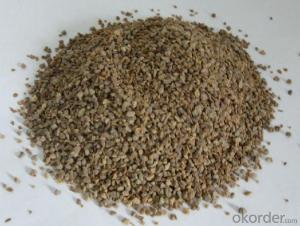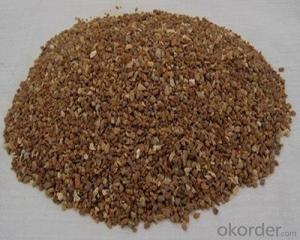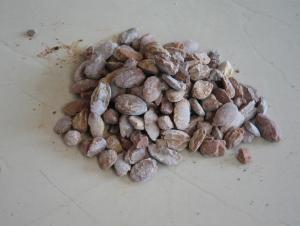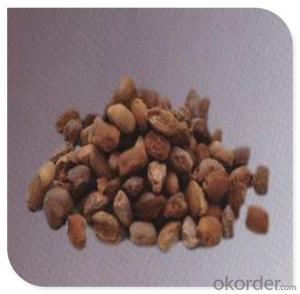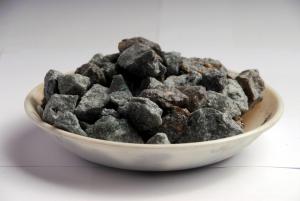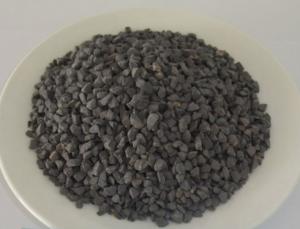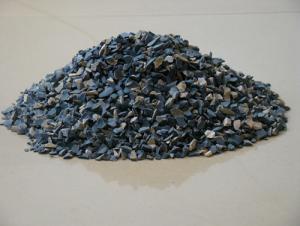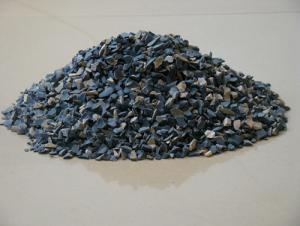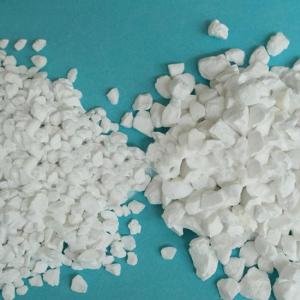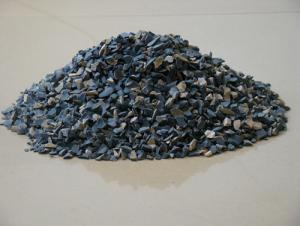High Grade Dead Burnt Magnesite - Raw Materials for Refractory
- Loading Port:
- Dalian
- Payment Terms:
- TT OR LC
- Min Order Qty:
- -
- Supply Capability:
- 2000 m.t./month
OKorder Service Pledge
OKorder Financial Service
You Might Also Like
| Item | MgO | SiO2 | CaO | LOI | B.D.(g/cm3) |
| DBM-97 | 97 | 0.7 | 1.4 | 0.2 | 3.2 |
| DBM-96 | 96 | 1.5 | 1.5 | 0.2 | 3.2 |
| DBM-95 | 95 | 2.2 | 1.6 | 0.3 | 3.2 |
| DBM-94 | 94 | 3 | 1.6 | 0.3 | 3.2 |
| DBM-93 | 93 | 3.5 | 1.6 | 0.3 | 3.2 |
| DBM-92 | 92 | 4 | 1.6 | 0.3 | 3.18 |
| DBM-92 | 92 | 4 | 1.6 | 0.3 | 3.18 |
| DBM-91 | 91 | 4.5 | 1.6 | 0.3 | 3.18 |
| DBM-90 | 90 | 4.8 | 2 | 0.3 | 3.18 |
| DBM-87 | 87 | 7 | 2.2 | 0.3 | 3.2 |
Dead burned magnesite- DBM-is produced using selected natural magnesite that is purified and is calcined in a shaft kiln.The final product is used for electric furnacefloors and furnace liner tamping.
Main products level :
0-1mm;1-3mm;3-5mm;0-10mm;0-30mm
50 to 325mesh (90% through)
Product feature:
high temperature performance and high-density, strong anti-permeability ability and easy to rapid sintering, very thin sintered layer,good thermal shock stability, strong slag-resistance, long service life and so on.
Product function:
Apply to the construction of bottom and wall of all kinds steel making electric arc furnace and ferroalloy smelting furnace for hot charging of hot metal and second hand steel
Product usage:
Mainly used in producing common magnesite brick, magnesite aluminum brick, magnesite chrome brick, gunning mix, hot patching mix for converter and EAF ect .
Product Advantage:
Our factory produce the products of the Dead-burned magnesite are selected natural magnesite, it is produced by mine-selecting, purifying, calcimine in shaft kiln. It is an ideal material for unshaped refractory material, the final products are used in open hearth furnace, electric furnace bottom and furnace's lining tamping.
- Q: What characteristics do A grade external wall fireproofing material have?
- For characteristics of A grade external wall fireproofing material, its main raw material uses cold resistant and thermal insulated, environmental protection and energy saving material with good insulation, keeping the indoor temperature steady and making the environment more comfortable. It is several times better than other masonry in overall strength and resist capability, and it can also hang heavy objects such as air conditioners by directly nailing or installing expansion bolts. Single point hanging machine can withstand heavy objects with the weight of more than 45kg. It can also be directly fixed to the tiles, wallpaper, wooden plaques, paint, etc.
- Q: which kind of material should be used in fireproofing cabinet?
- Here are a few good materials: 1. The mineral wool board, glass wool board: it mainly tales mineral wool, glass wool as insulation materials. It's non-combustible, light weight and has good high temperature resistance, but there are shortcomings ① short?fiber will harm the human respiratory system, ② poor sheet strength, ③ poor barrier property of sheet for smoke of fire disaster, ④ poor decorative properity, ⑤large installment and construction work. Thus, most of the boards were sheets that take inorganic anchoring material as base material, glass wool as reinforcing material. 2. cement board: Cement board has high strength and wide sources. It is often used in fireproof suspended?ceiling and partition in the past, but it has poor fire resistance and is easy to burst and lose protective function , which will limit it's applications. Cement concrete component has good thermal insulation and sound insulation properties, and it can be used as partition and roof board. Fiber reinforced cement board and other improved varieties appear in the construction?materials market, and they are high strength and have good fire resistance, but their disadvantages are poor toughness, large alkalinity and poor decoration effect. 3. perlite board, cenosphere board, vermiculite board: It's a kind of hollow plate that takes low alkalinity cement as base material, perlite, glass beads, vermiculite as the aerated filling material, and is made by adding some auxiliary. It has characteristics of light weight, high strength, good toughness, fireproofing and thermal insulation, easy for construction,etc. and it can be widely used in high-rise building frame compartment, household, bathroom, kitchen, communication pipe and other non-load bearing areas.
- Q: Does anyone know which materials belong to light fire resistant material?
- Building board of lightweight fireproof partition material: 1, GRC lightweight partition material glass fiber reinforced concrete; it is a kind of fiber cement composite with alkali-resistant glass fiber as reinforced material and cement mortar as the base material . Aerated concrete block equipment foundation construction Its outstanding features are having good tensile, rapture strength and good toughness. This kind of material is particularly suitable for the production of ornament mould and the manifestation of strong texture. Compared with these external wall decorative materials, the biggest advantage of GRC material is to meet the individual needs of architects, completing the expression of various ornament moulds and skin textures. 2, fiber reinforced low alkalinity cement building plate. The standards stipulate the classification, raw materials, technical requirements, test methods, inspection rules, packaging, labeling, transport and storage of the fiber reinforced low alkalinity cement building plate.
- Q: Does refractory belong to stone, building materials or other?
- It belongs to metallurgy and building material industries.
- Q: How is the performance of refractory materials?
- It is a little difficult to answer. There are some requirement for refractory materials, such as fire resistance, softness, creep, thermal shock, abrasive resistance. Besides, requirements for construction performance include: Liquidity, plasticity and other linear change rate, volume density, strength (including high temperature) and all other important indicators must be tested the same conditions with the use of test conditions and test items like body density, strength, line changes in the basic project
- Q: What are the differences between thermal?insulation?material and refractory?
- Just as its name implies, Thermal insulation means that it doesn't conduct heat instead it insulates heat inside, while refractory means resistance to high temperature and it will not be out of shape or damaged due to high temperature.
- Q: how long is the fire endurance of plasterboard?
- Gypsum board is flame retardant materials, combustion performance rating B1, but when mounted on a steel joist, it can be seen as rating A(non-combustible material) . So it is fine to use as a ceiling. You can randomly choose several samples to run some tests at the quality inspection insititute and the quality of these samples are subject to the testing results.
- Q: What are fire resistant level standards of class A fire resistant door?
- Situations under which fire endurance should at least meet class A fire resistant door standard: In basement, the fire door for room where the stored combustibles average weight exceeds 30kg/㎡; in partition basement, the fire door for partition of room where the stored combustibles average weight exceeds 30kg/㎡; in high building, the fire door for equipment room of automatic fire extinguishing system, fan room and air-conditioner room; in boiler room, transformer?cabin, diesel?generator room(other dangerous rooms), the fire door in firewall. These places are special and need high security, so they need to meet the standard of class A fire resistant door. What is class A fire resistant door? New Standard for Fire Door GB12955-2008 provides that class A fire resistant door thermal insulation and refractory integrity should be no less than 1.5 hours. In other words, the key of fire door grade is the fire-resistant time. Class A fire resistant door size: class A fire resistant doors have many sizes, and can be customized according to the needs of customers. For example, the size of some fire doors of the diesel generator room is large, while the size of fire doors of basement storing combustibles is small. So the size of class A fire resistant door is also different. Usually Xinduo will take this into account, produce class A fire resistant door with various sizes and can customize according to customer requirements. Class A fire resistant door standard: as is mentioned above, for class A fire resistant door standard, the key is the fire resistant time, no less than 1.5 hours. In texture, class A fire resistant door standard is manifested in the firm joint, uniform distribution of solder joints and smooth surface coating. It has also set fireproof sealing strip which should be straight.
- Q: Can anyone tell me what is the material of which the mould for refractory is made?
- It is ordinary steel mould and it should not rust
- Q: Where is the development of refractory industry?
- Continuous casting system varieties used in refractory materials include: (1) ladle refractories -- ladle lining, permanent lining, ventilation components; (2) tundish refractories -- linings and coatings, insulation board, cover; (3) functional refractories -- non oxidation casting with long nozzle, immersion nozzle, stopper, sliding gate; (4) purifying molten steel with ceramic purifier, slag dam, alkaline coating and horizontal continuous casting for separating ring gate, etc..
Send your message to us
High Grade Dead Burnt Magnesite - Raw Materials for Refractory
- Loading Port:
- Dalian
- Payment Terms:
- TT OR LC
- Min Order Qty:
- -
- Supply Capability:
- 2000 m.t./month
OKorder Service Pledge
OKorder Financial Service
Similar products
Hot products
Hot Searches
Related keywords
